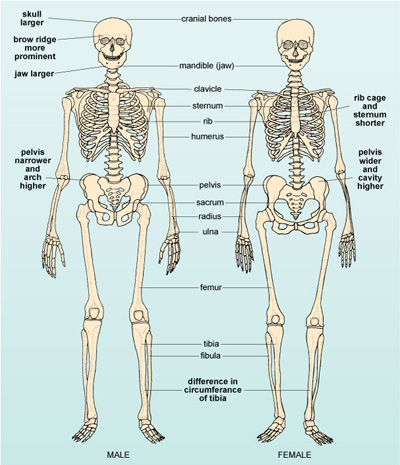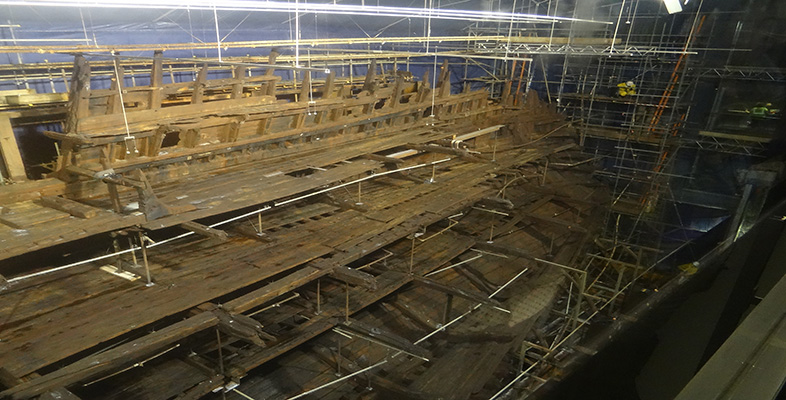4.1 Determining the gender of the crew
It is not always obvious when dealing with remains, particularly in archaeology, what the gender of the deceased was. For humans, a wealth of information can be provided by the body to help to determine their gender, by comparing skeletal structure (Figure 6):
- the skull - in males, the skull typically has a more prominent brow and larger lower jaw bone (mandible) than in females
- the clavicle (collar bone) - males typically have straighter, thicker clavicles than females (who may have a more V-shaped collar bone)
- the rib cage - females generally have a shorter rib cage than males of similar height
- the sternum - the central breast bone is typically broader and longer in males than in females
- the pelvis - the female pelvis is wider and has a much larger cavity compared with the male pelvis, which is typically more enclosed
- the tibia (shin bone) - females generally have thinner tibias than males.

Carefully measuring and comparing the size and shape of bones from adult human remains and comparing them with modern-day records is a means of determining gender with a relatively high level of certainty. Although the gender cannot be definitively determined from measurements of a single bone, by combining evidence from several bones, or using this evidence in conjunction with other information, it is possible to improve the certainty of gender identification. All of the 92 complete skeletons on the Mary Rose were male (Stirland, 2005). Some were adolescents and at least one was a child, but it is not generally possible to determine the gender of adolescents and children from the size and shape of the bones, as the skeleton continues to grow at varying rates until late adolescence (or early adulthood).
Gender can also be determined by analysing aDNA (ancient DNA) when only bone fragments or organic remains are preserved.
Karyotyping is used to identify the presence of X or Y chromosomes.
What chromosomal pairing would you expect to see for (a) females and (b) males?
(a) Females will exhibit an XX pairing and (b) males an XY pairing.
